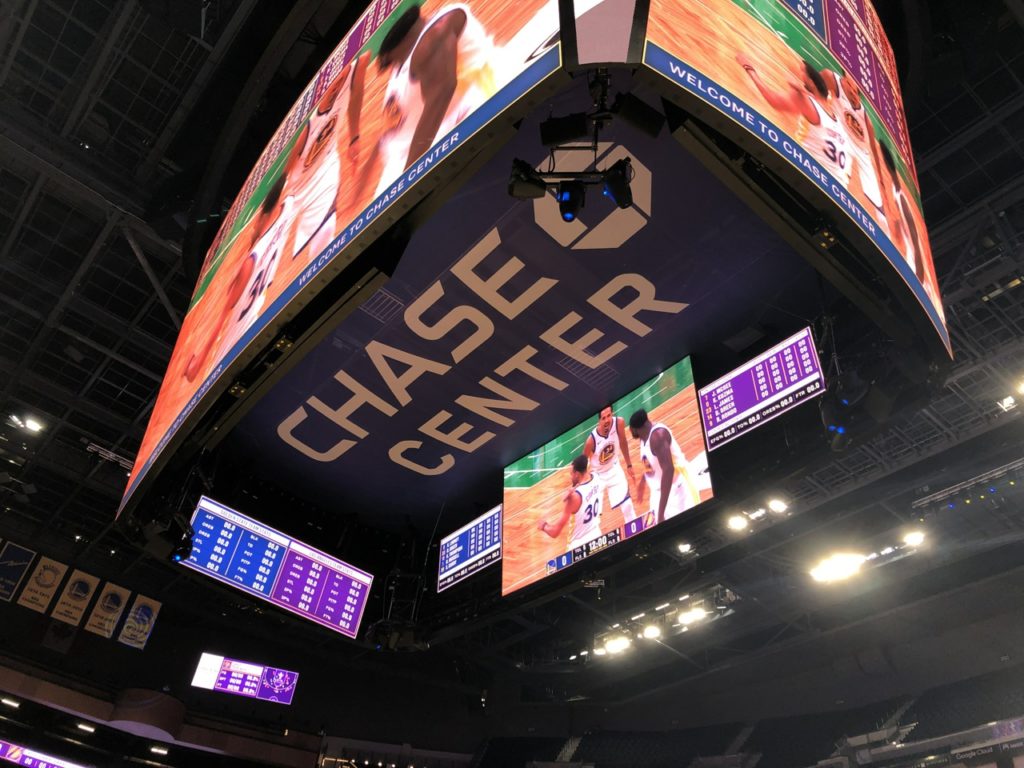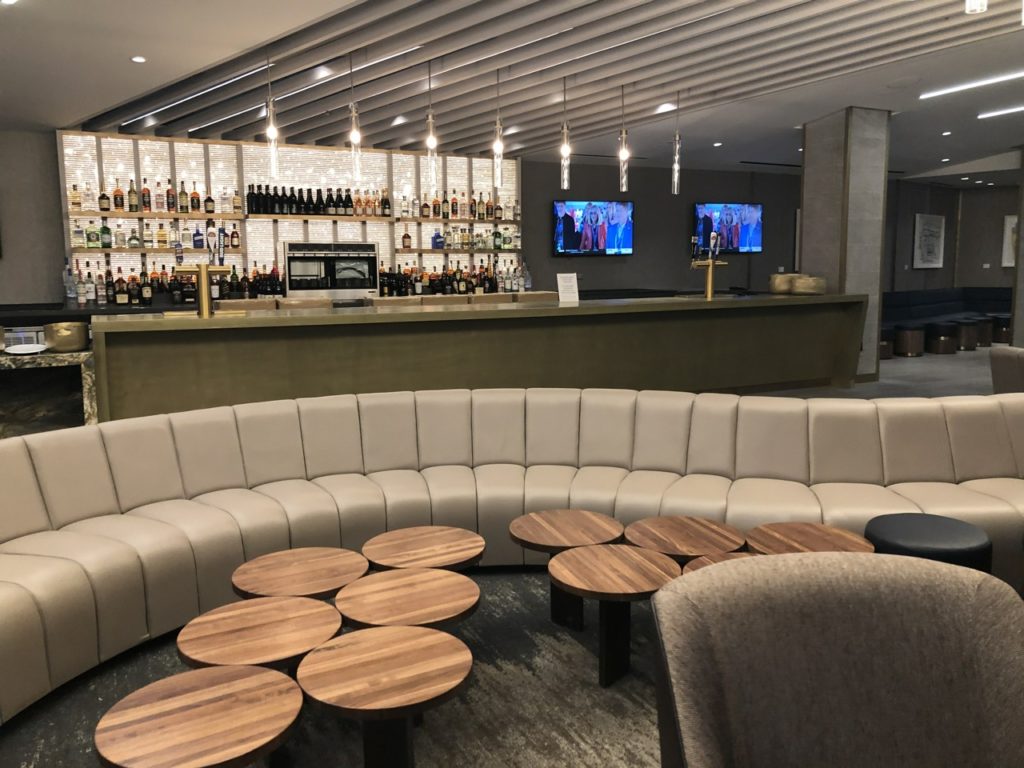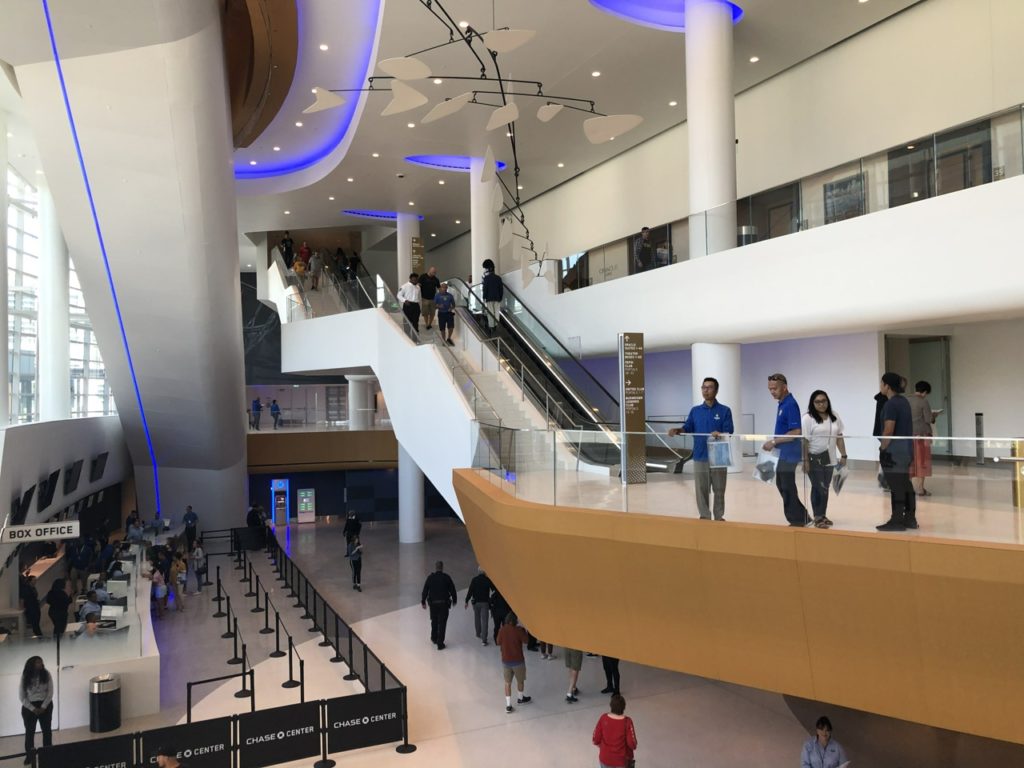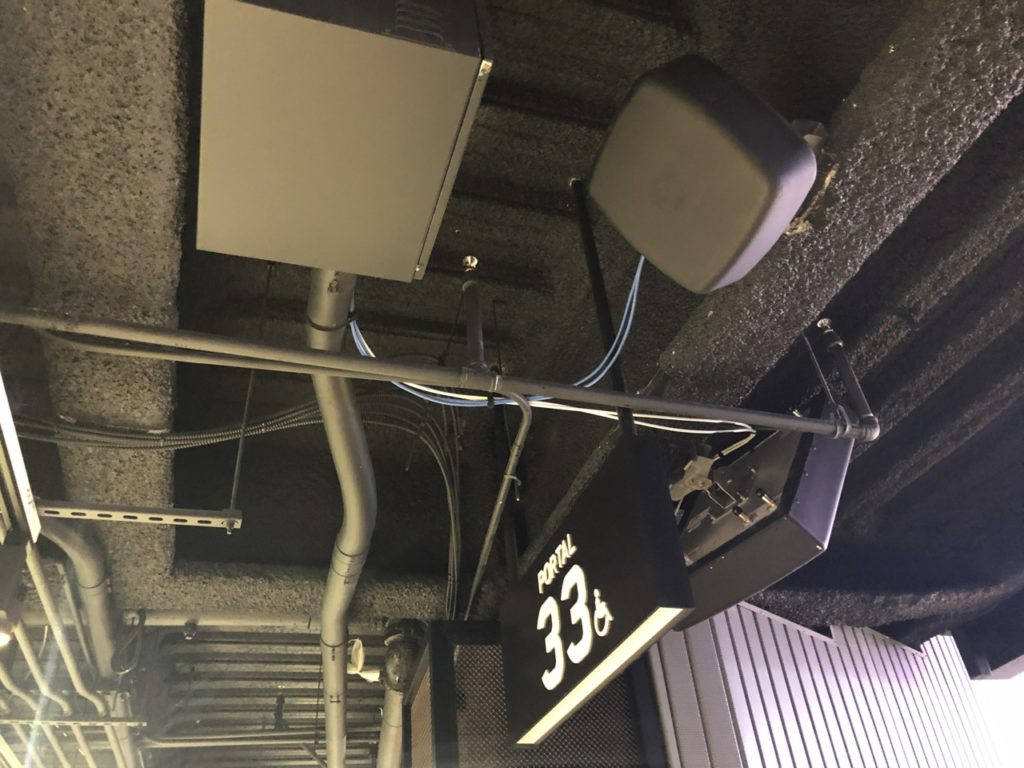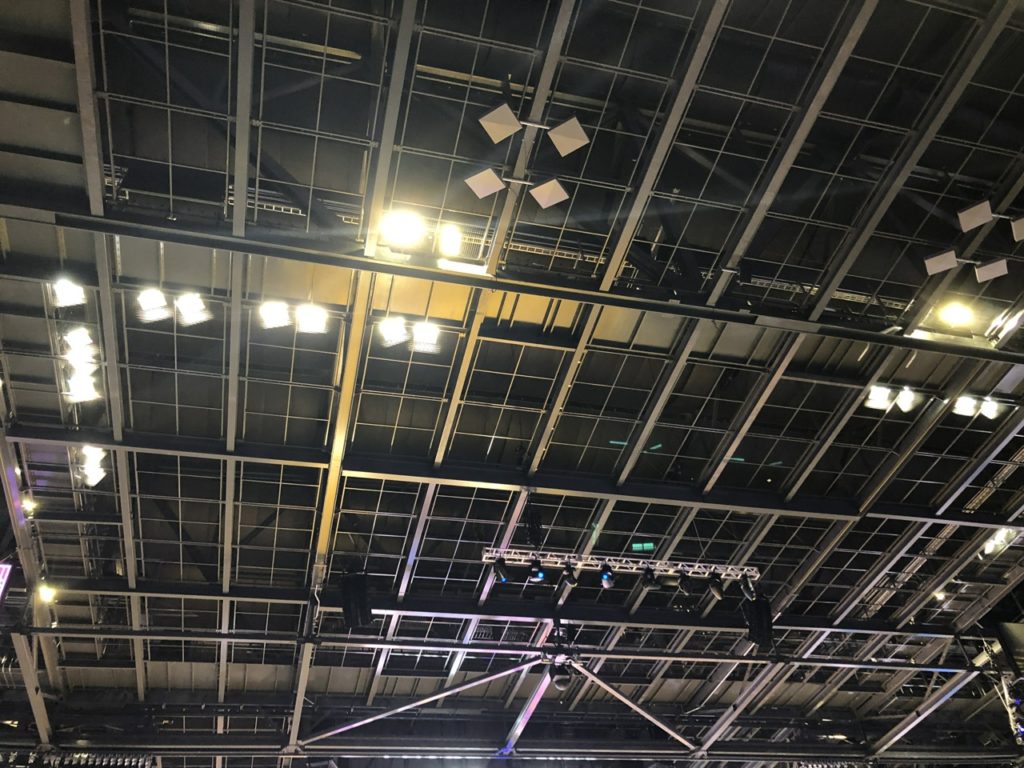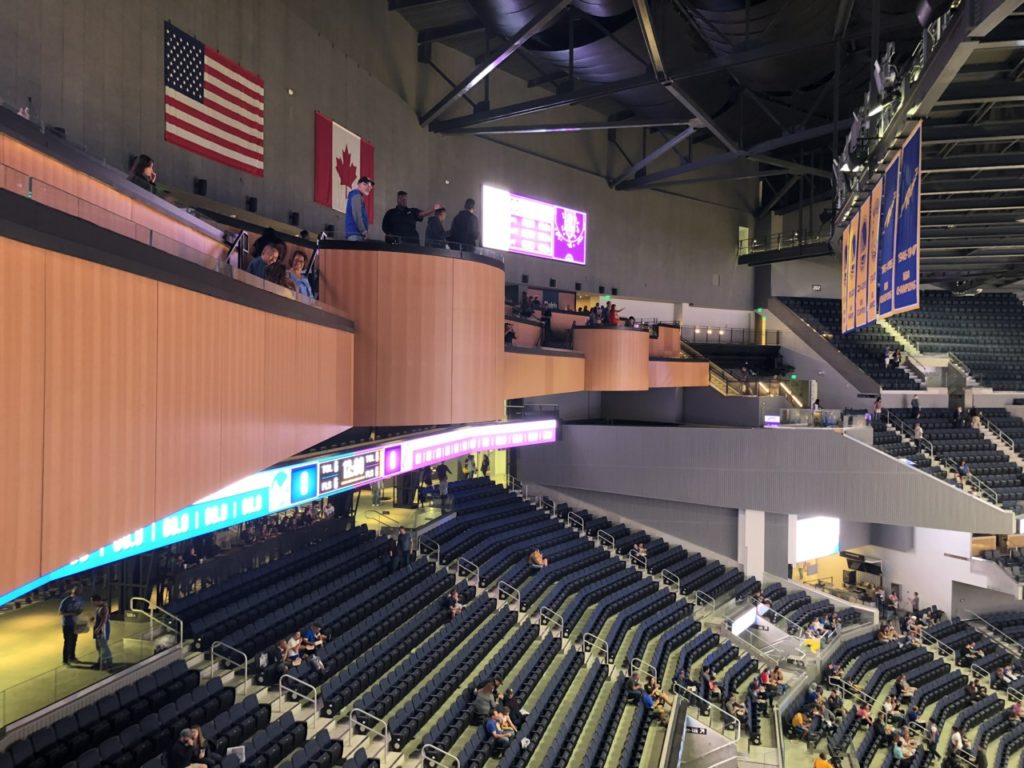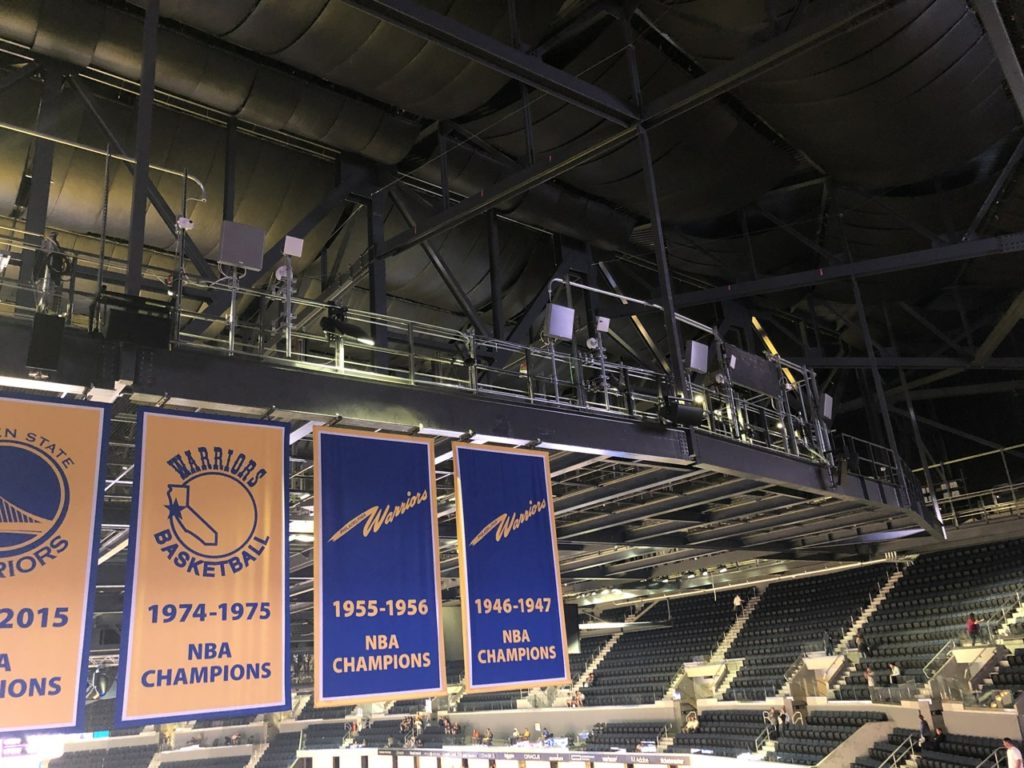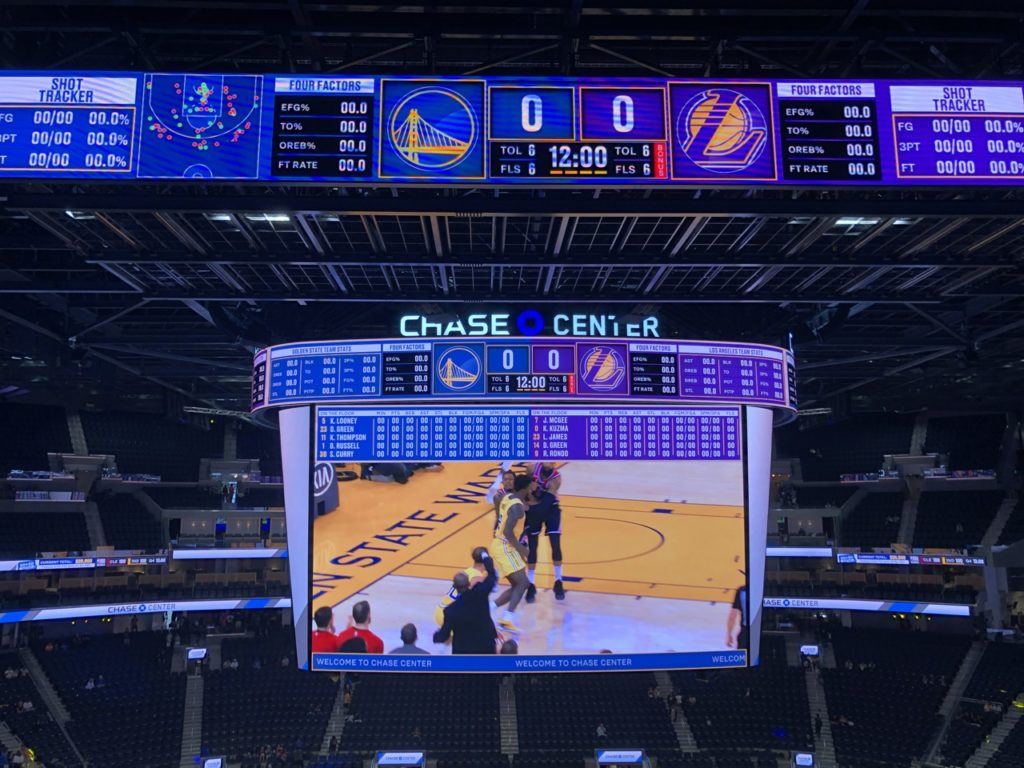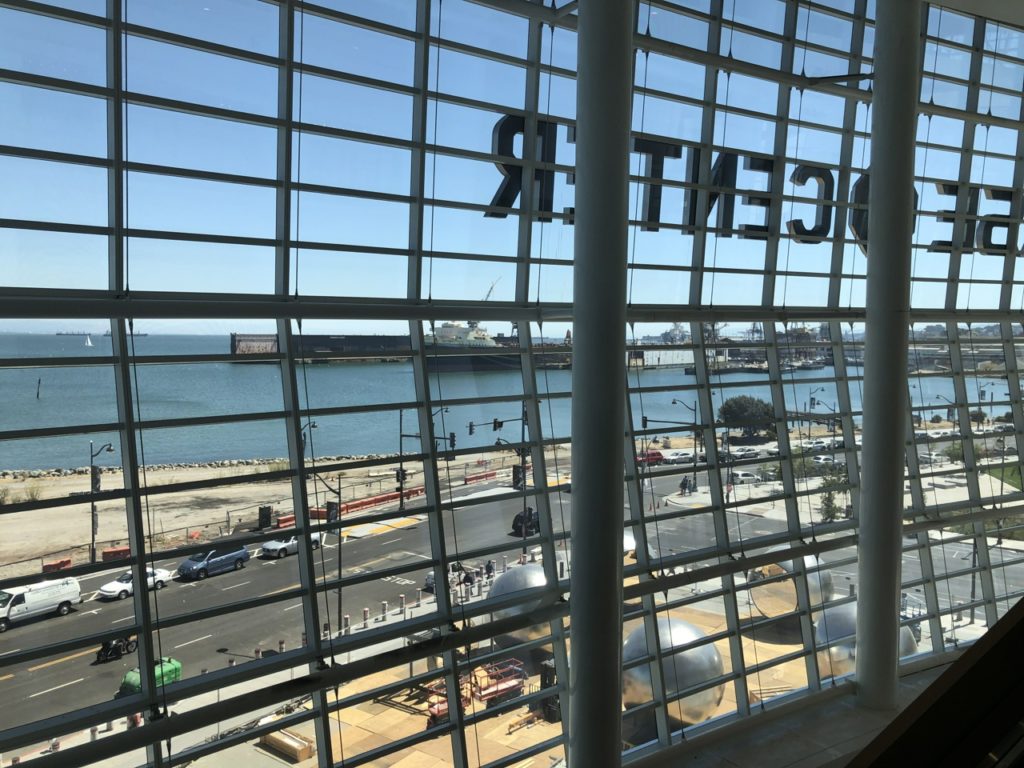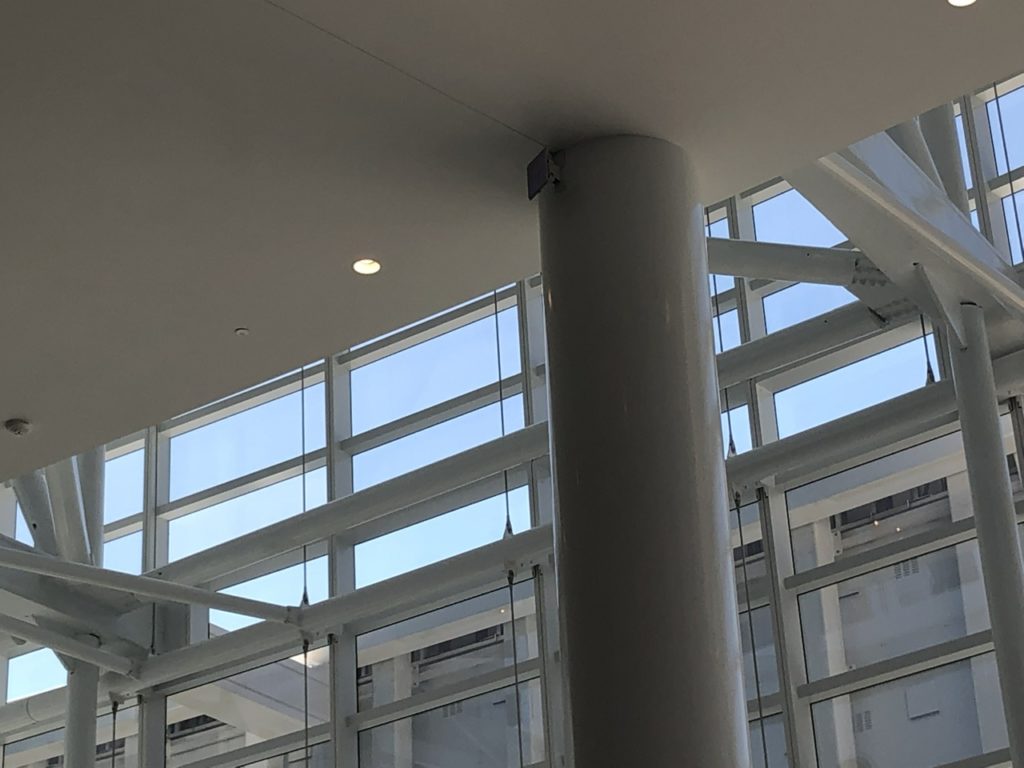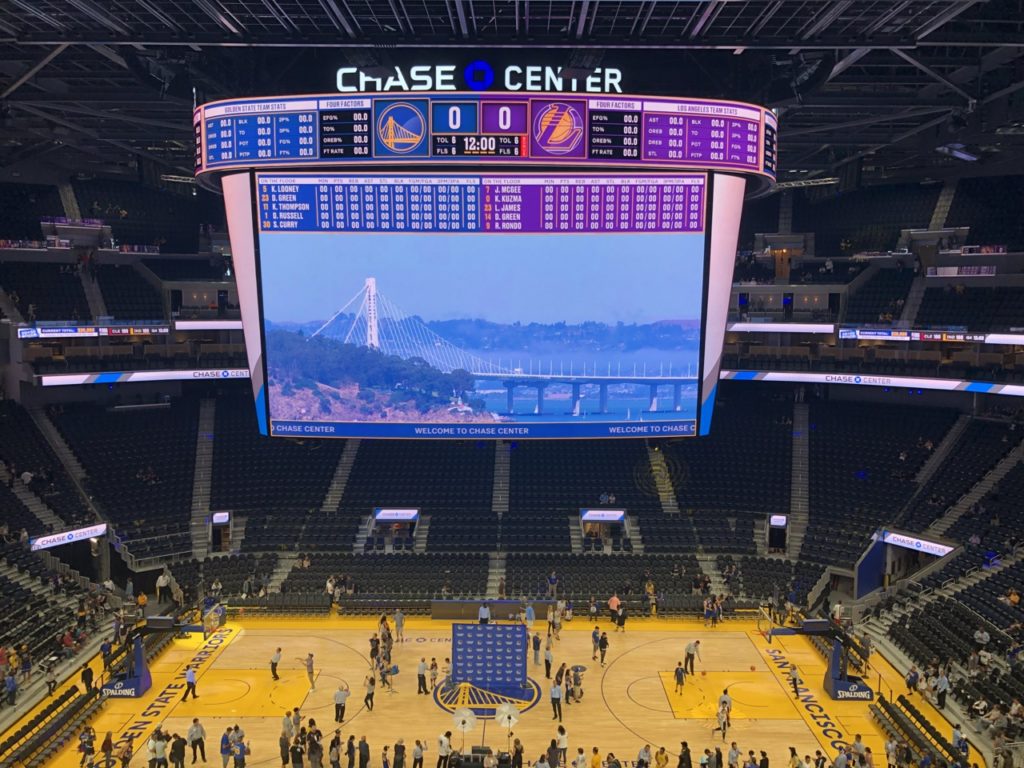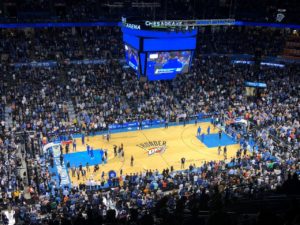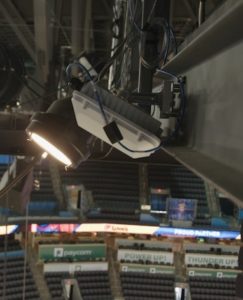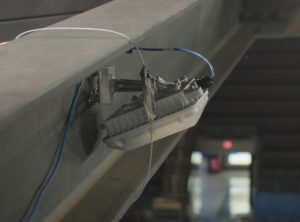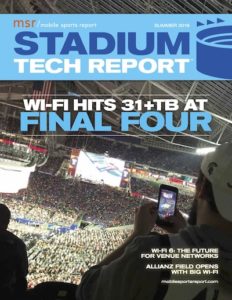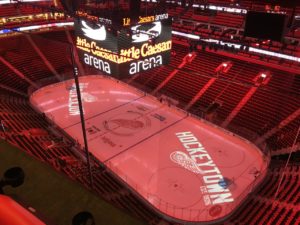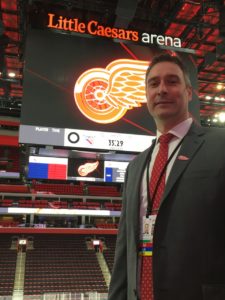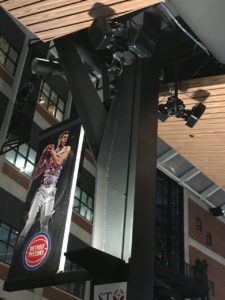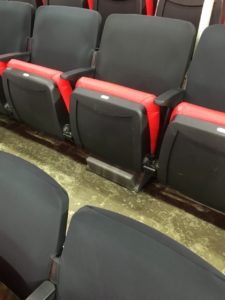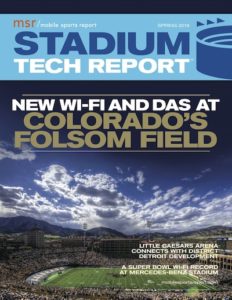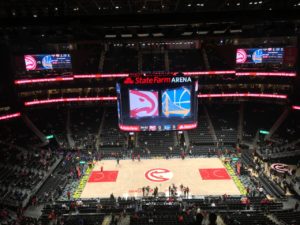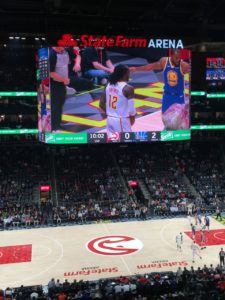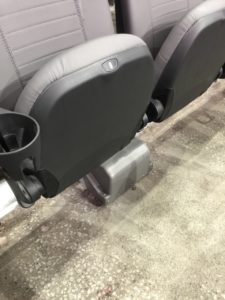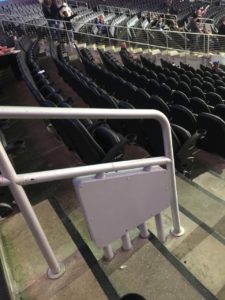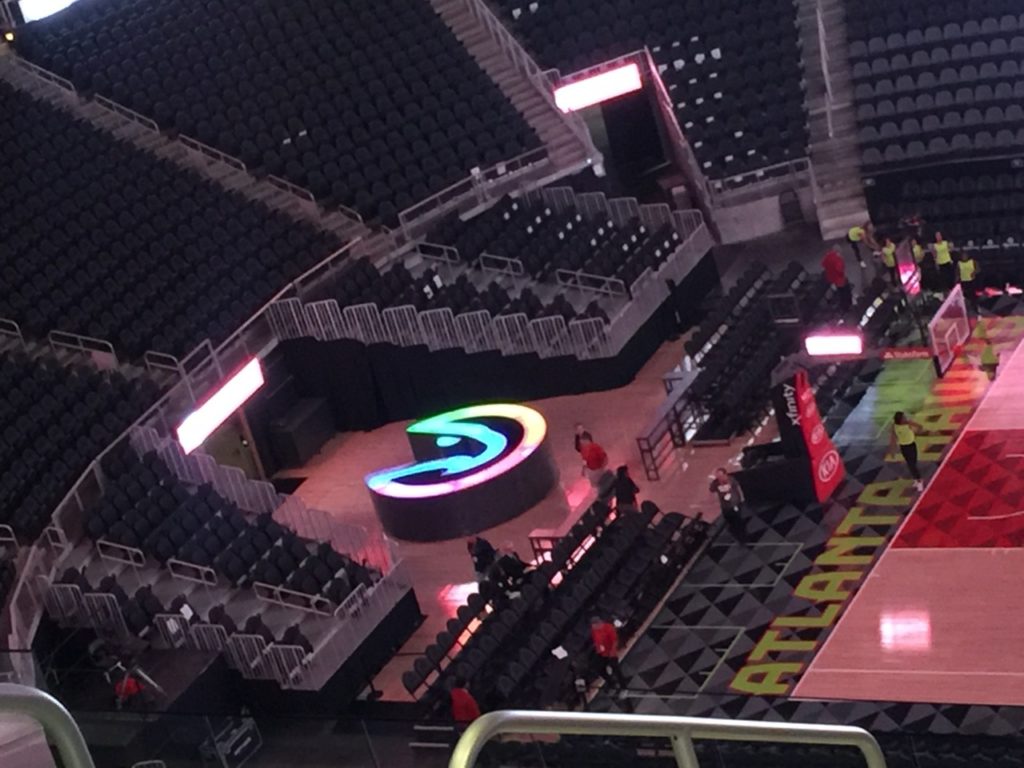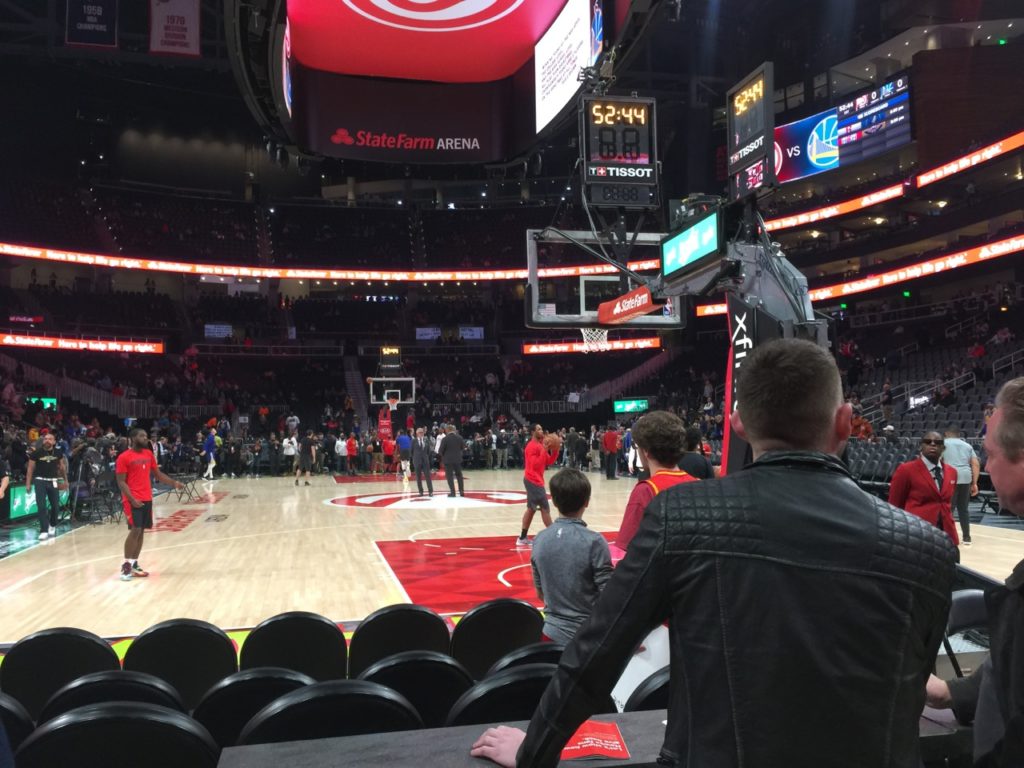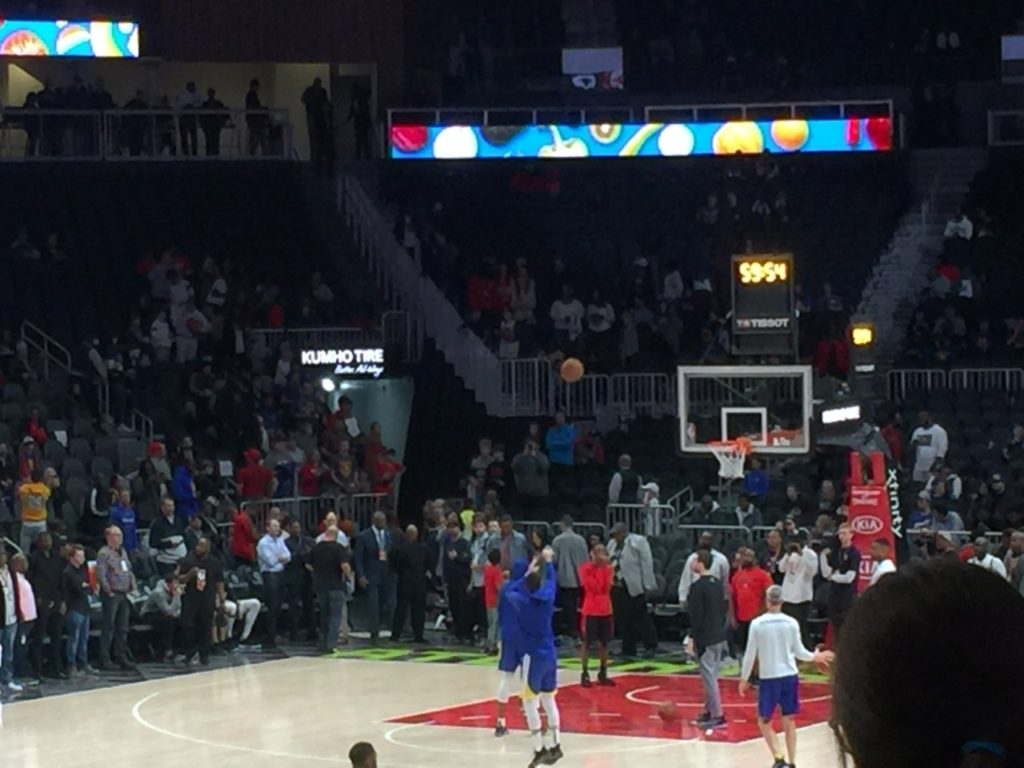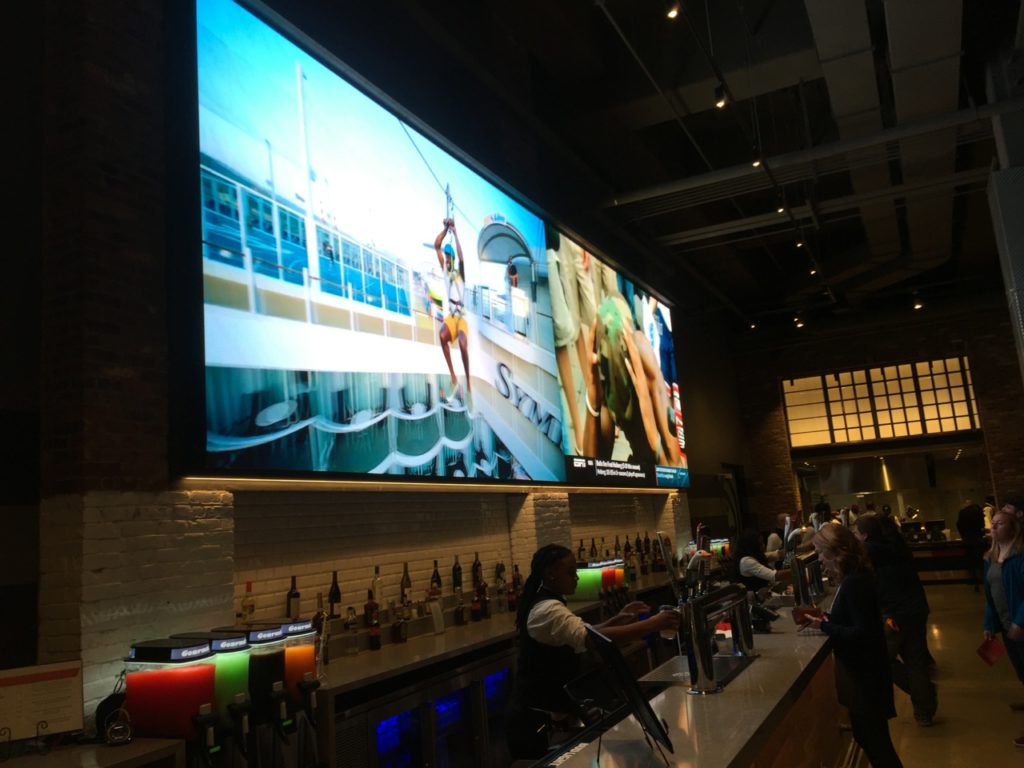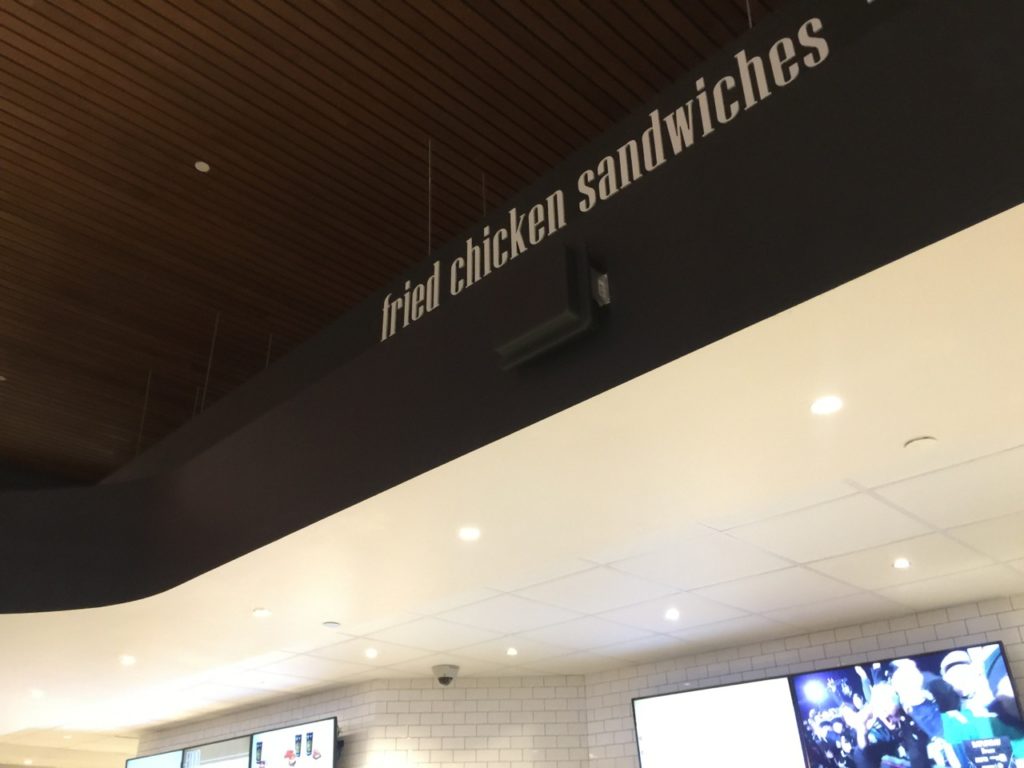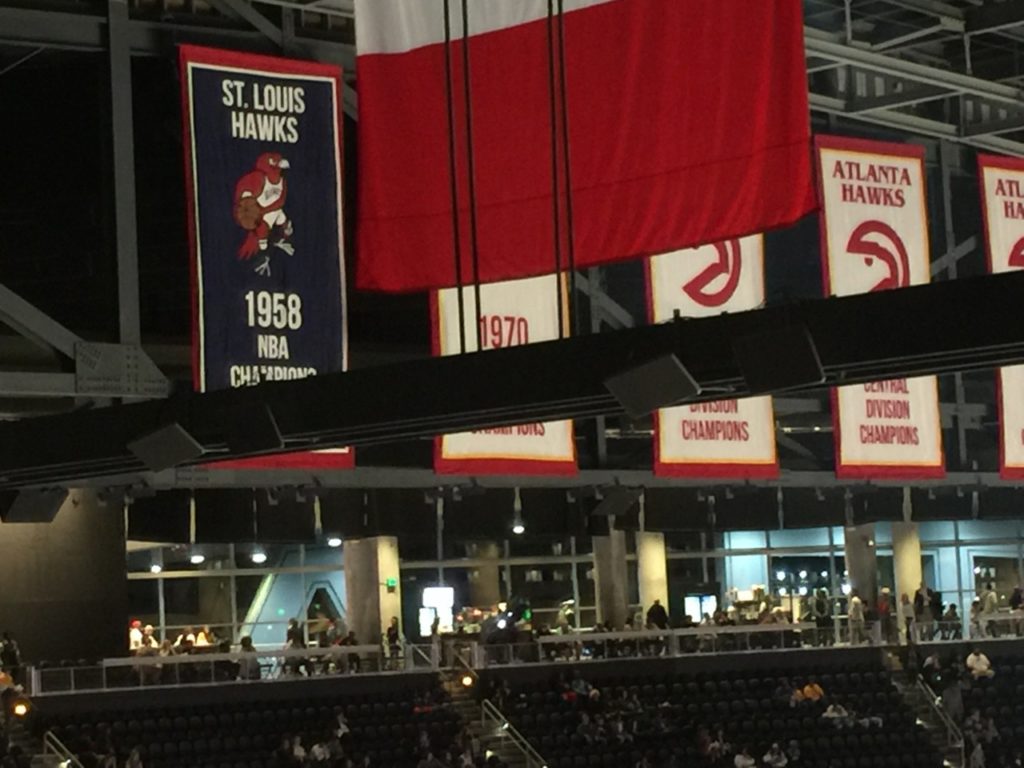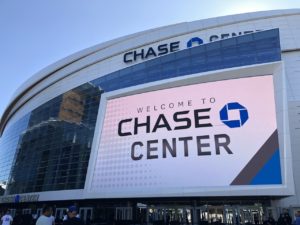
The exterior of Chase Center, with its humongous video board. Credit all photos: Brian Nitenson, MSR (click on any picture for a larger image)
Since the wireless networks aren’t really fully operational yet we don’t have any speed tests from Brian’s visit but from his pictures we can see multiple Wi-Fi and DAS antenna deployments so it’s a safe bet that the connectivity will be first-rate. There is also some hint of advanced technology being used in the concessions department — note the photo of a sign instructing fans toward a credit-card kiosk operation — which makes sense given the main business of the arena’s title sponsor.
Much more coverage from Chase Center to follow this fall, but for now take a look at the NBA’s newest arena, a privately financed jewel on the San Francisco bay.
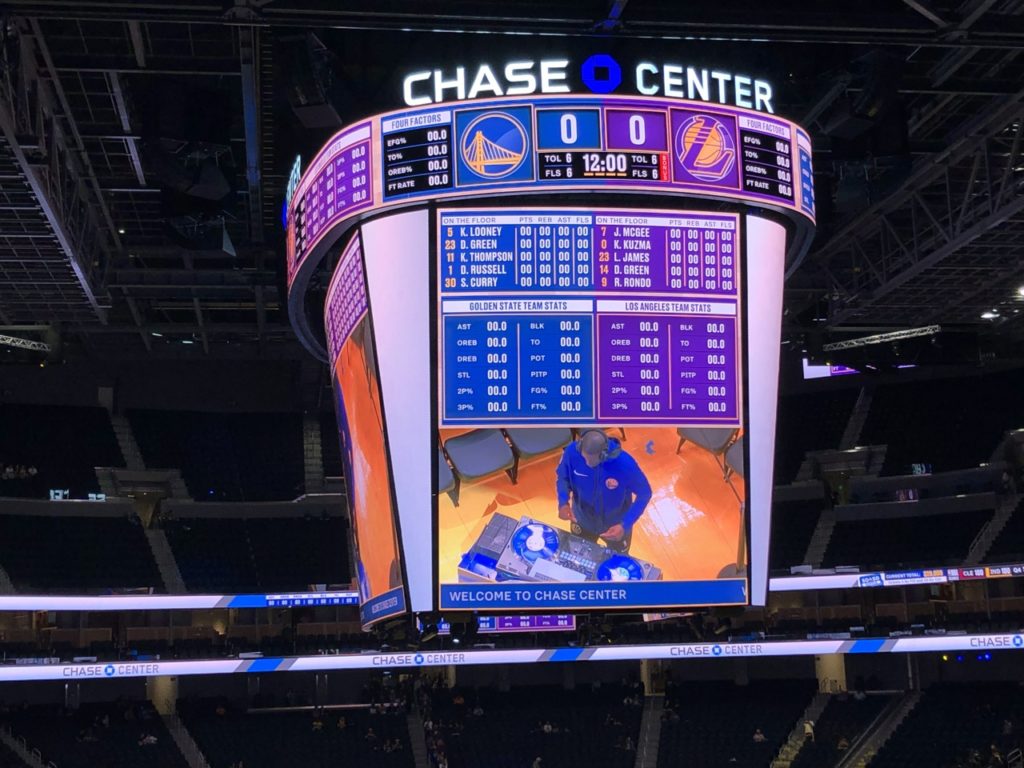
A good look at the Samsung center-hung scoreboard
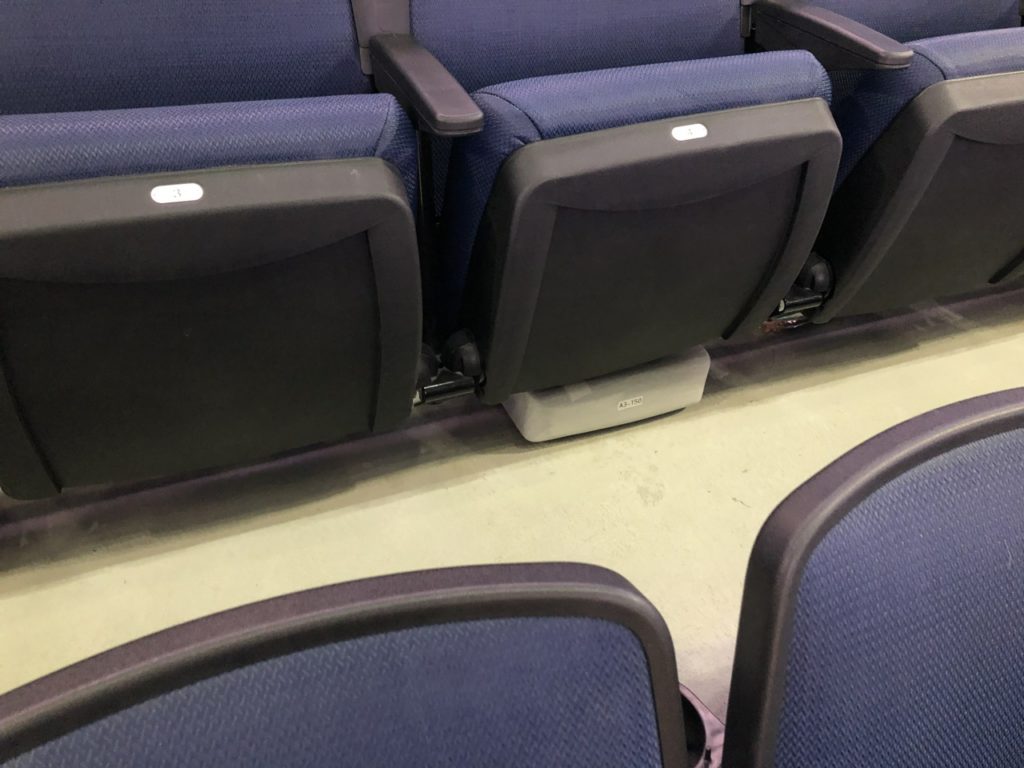
One of the under-seat antenna deployments
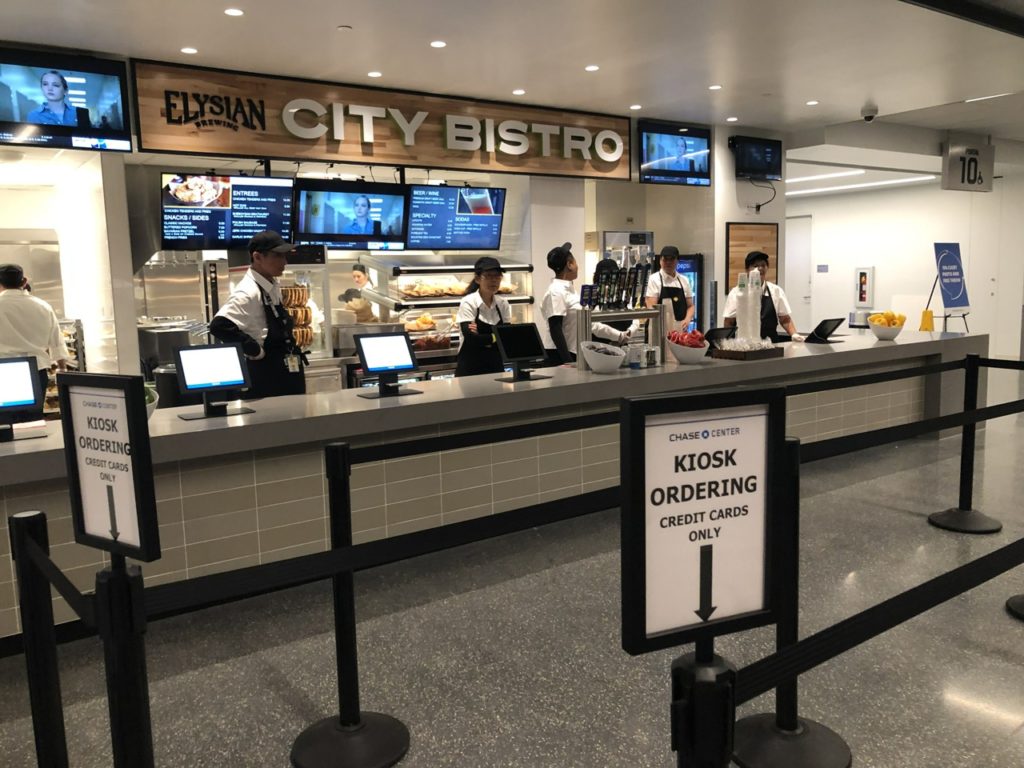
Kiosk ordering! More good news as technology hits the concession stand
This is what the scoreboard looks like from seats you will never be able to afford
One of the club areas
Part of the striking architecture in the entry area
Antennas painted to blend in
Some interesting gear in the top catwalk areas
Some of the upper level ‘theater box’ seating
Lots of Wi-Fi and DAS antennas visible covering the upper decks
Scoreboard and ribbon board view from seats higher up
A nice view out to the bay
Do I spy Wi-Fi way up high?
A wide look at the big screen
